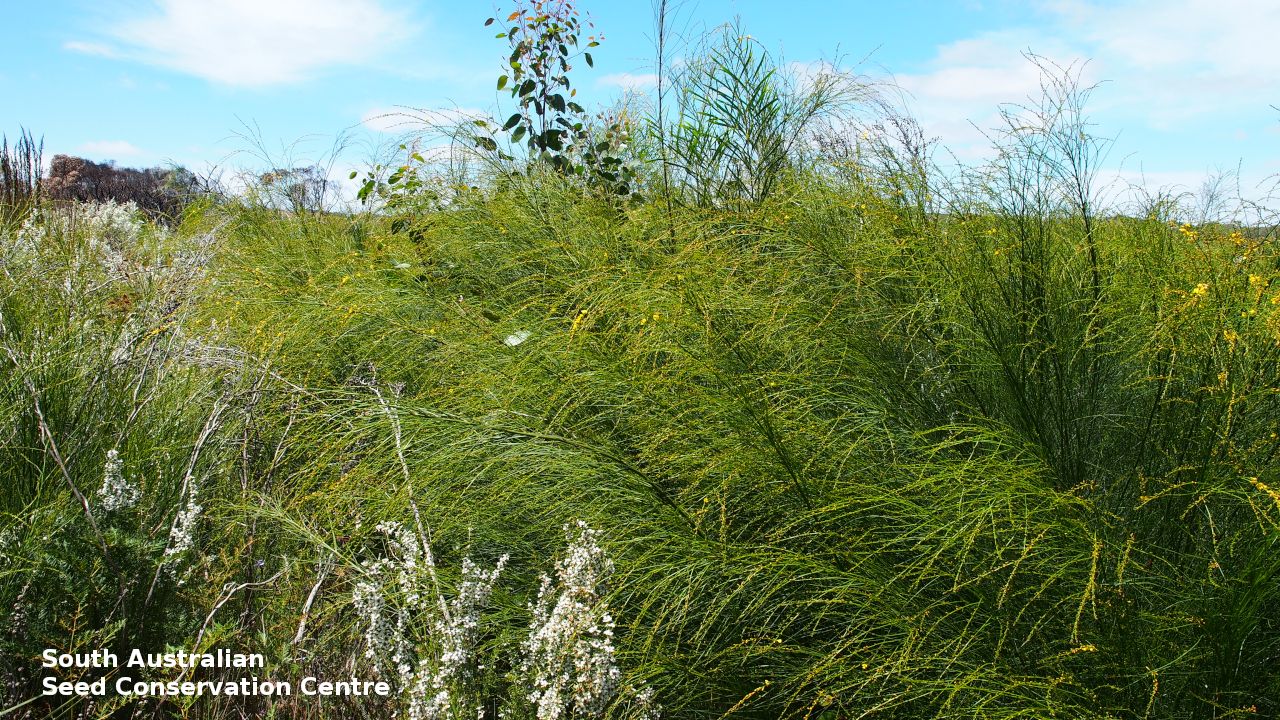
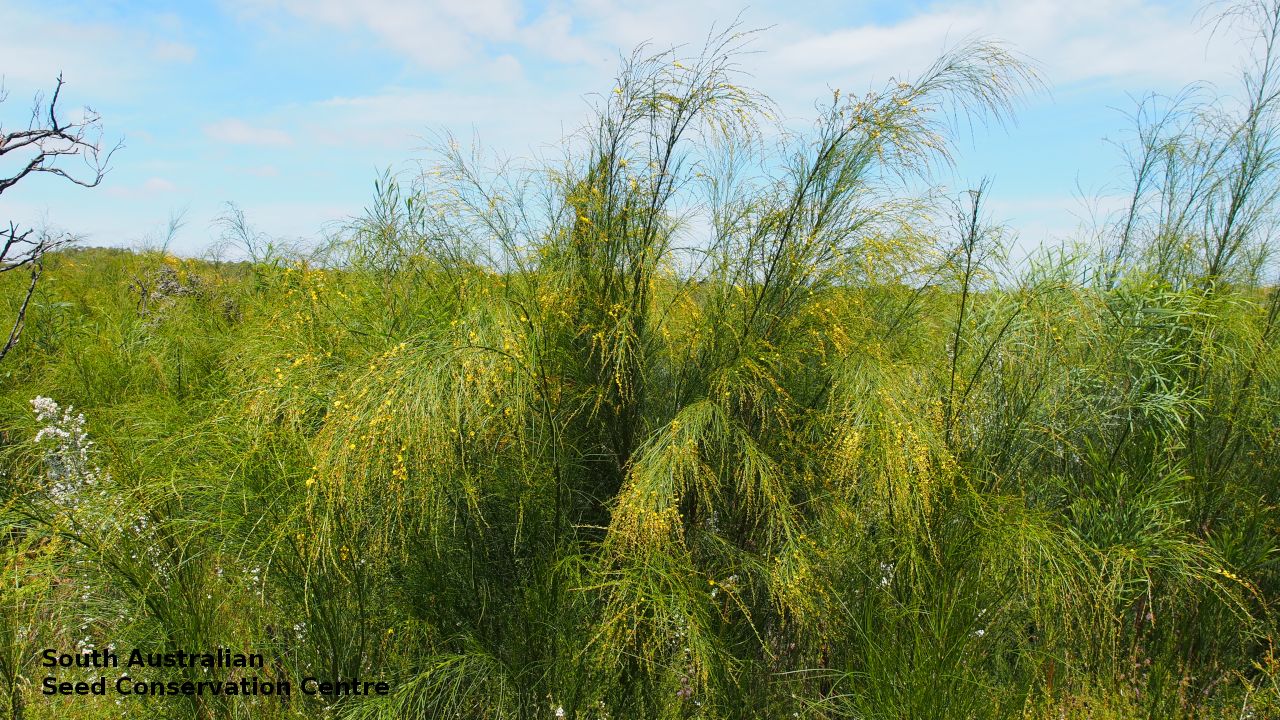
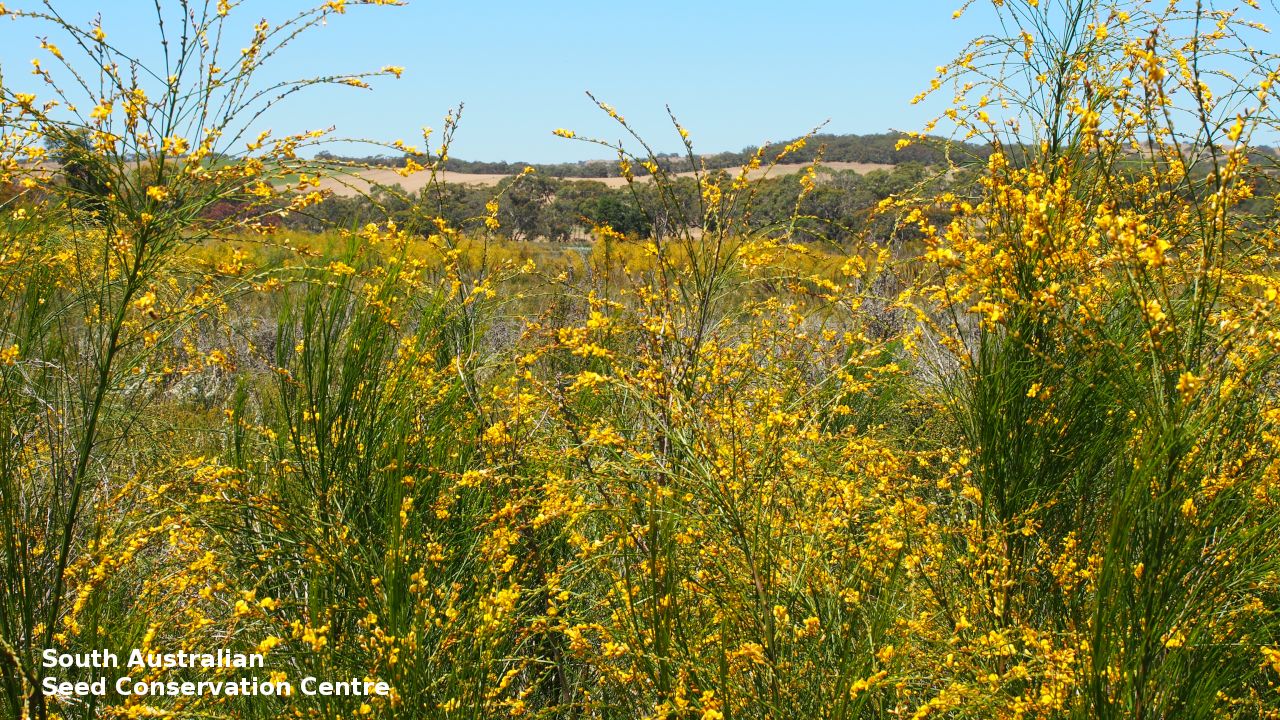
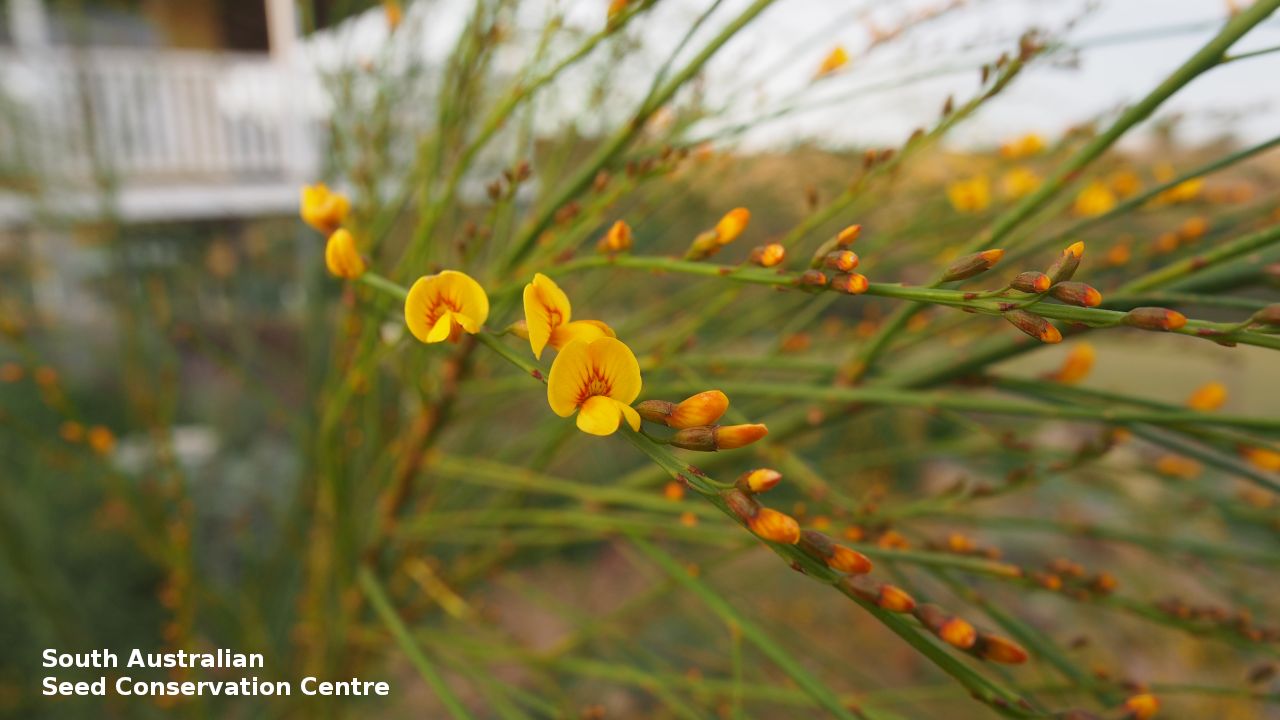
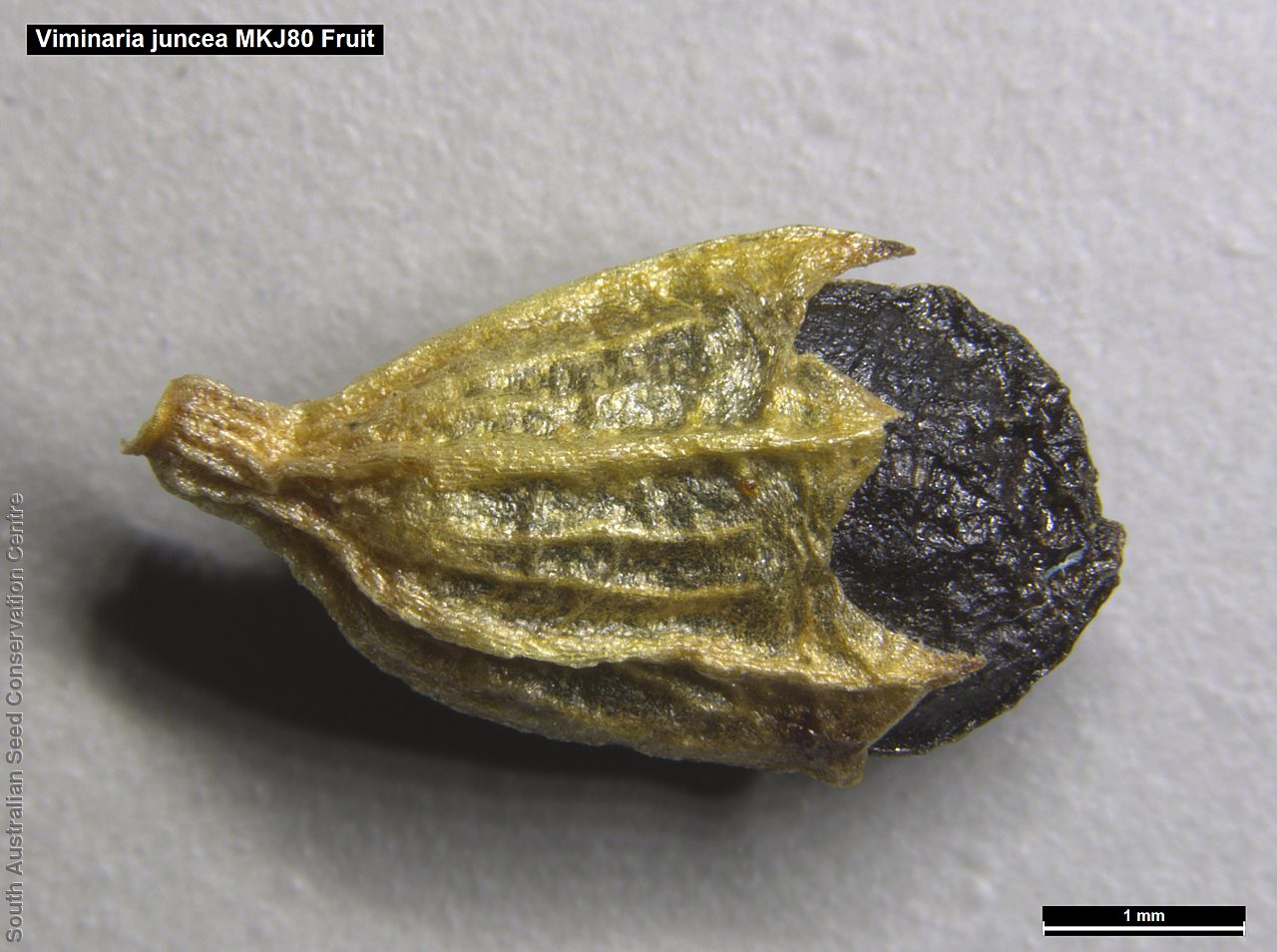
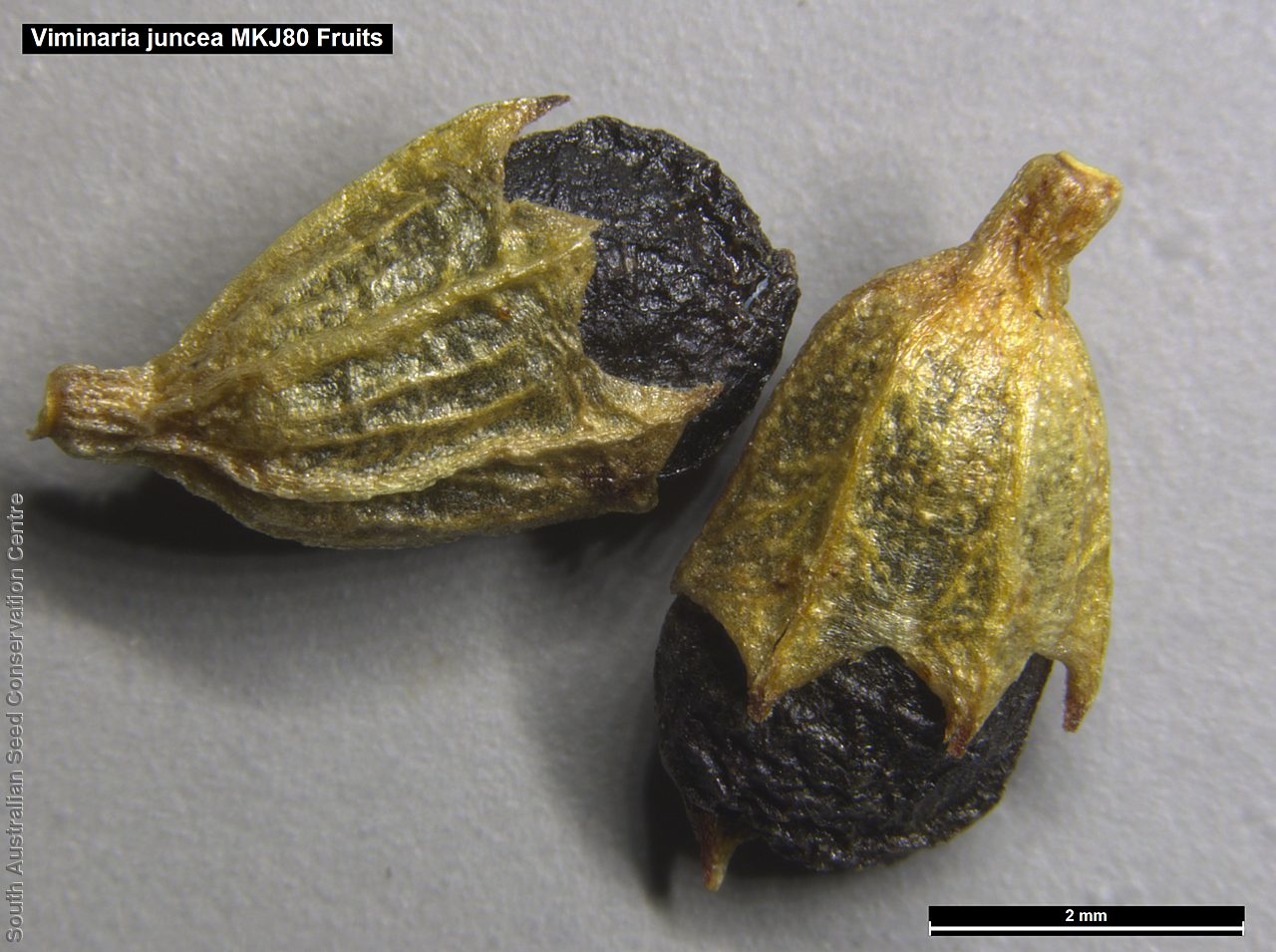
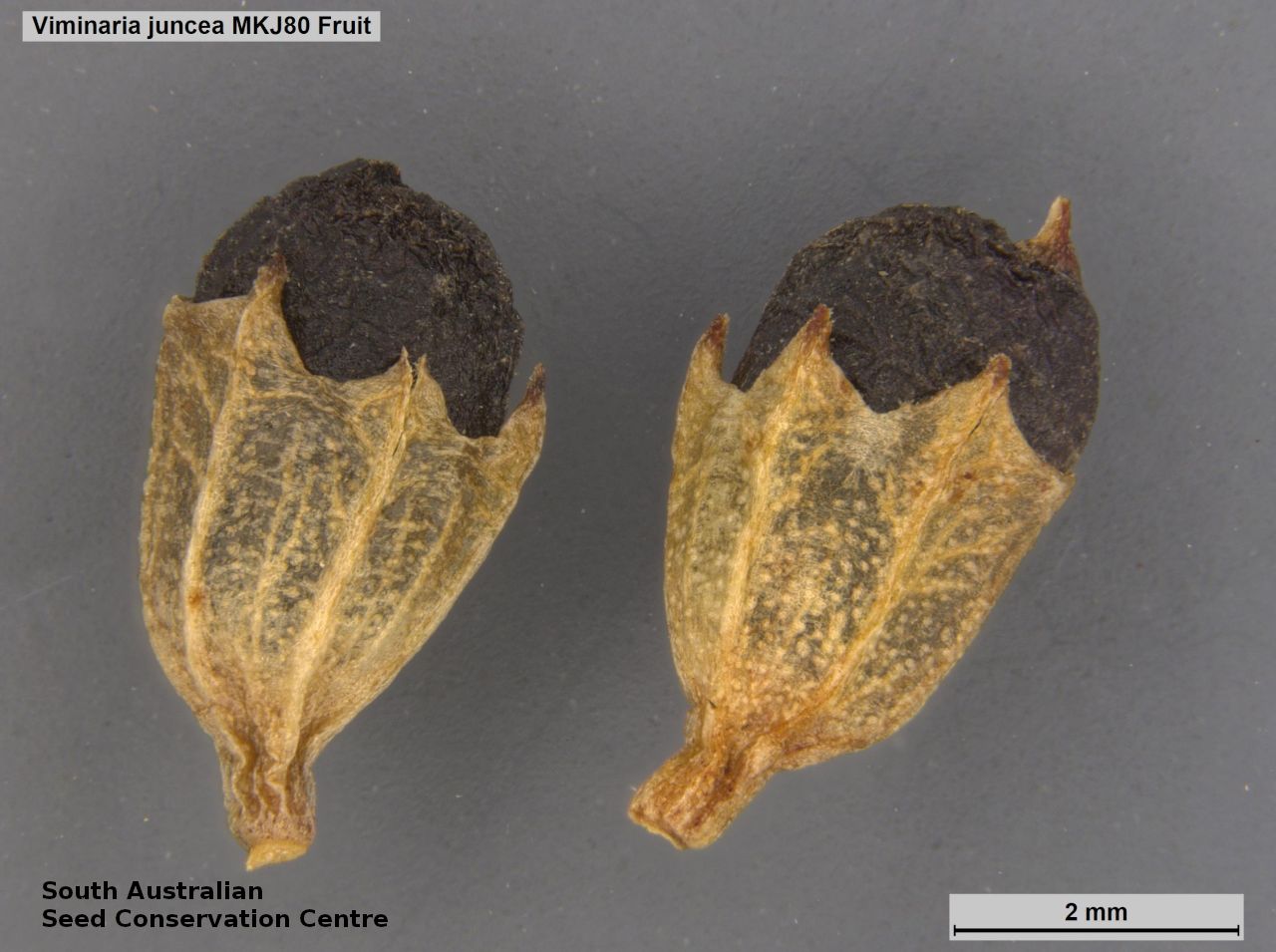
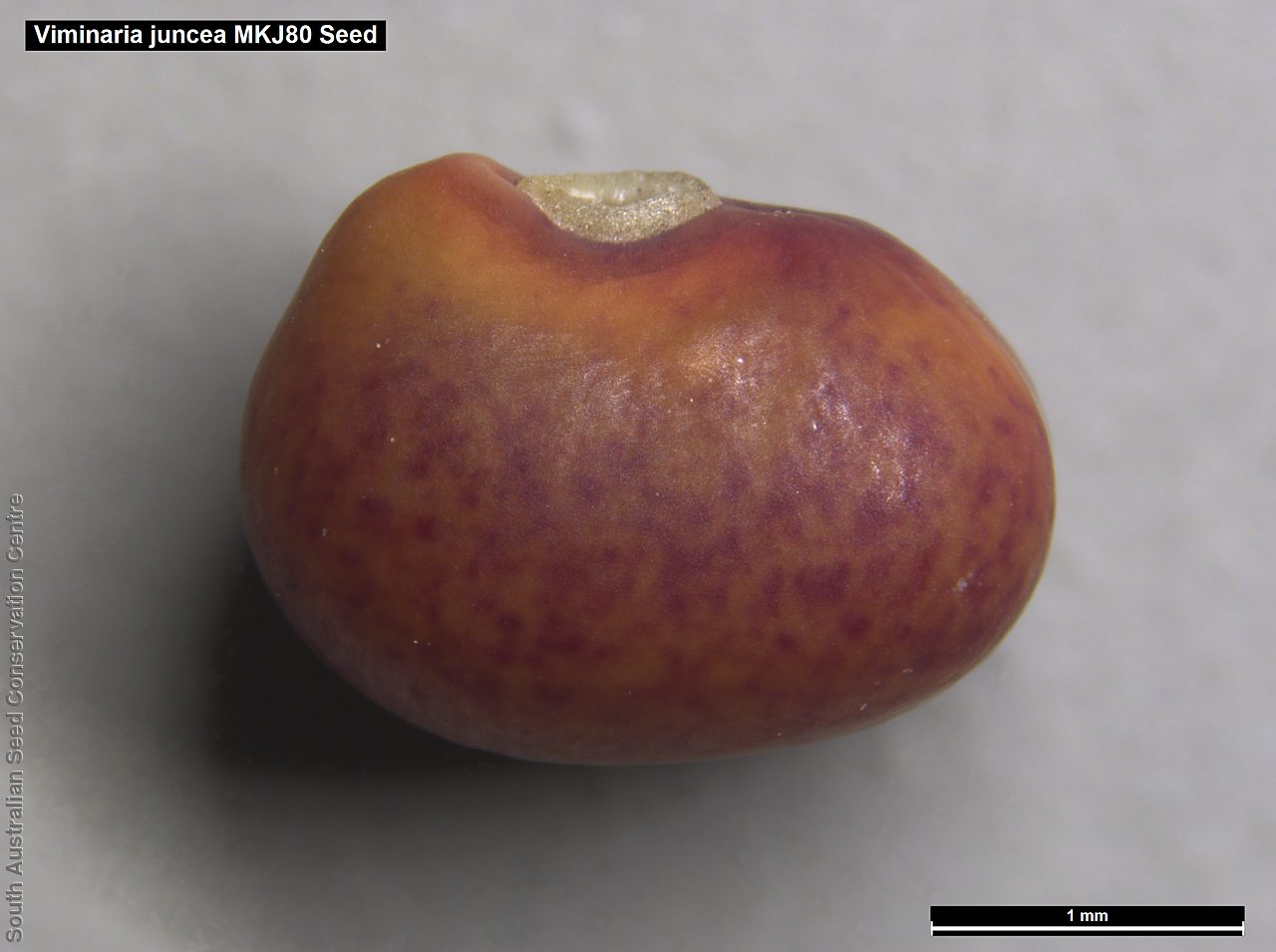
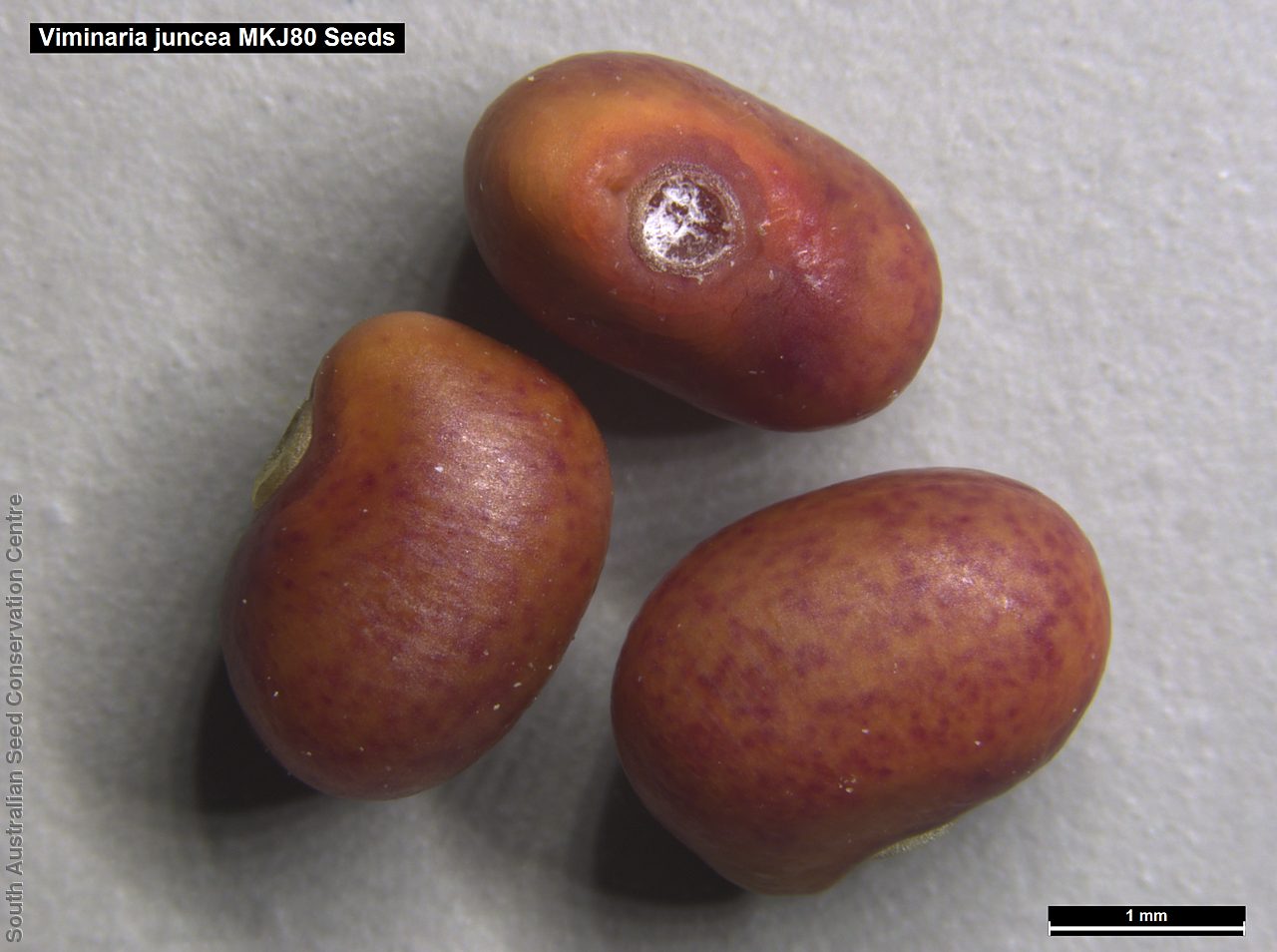
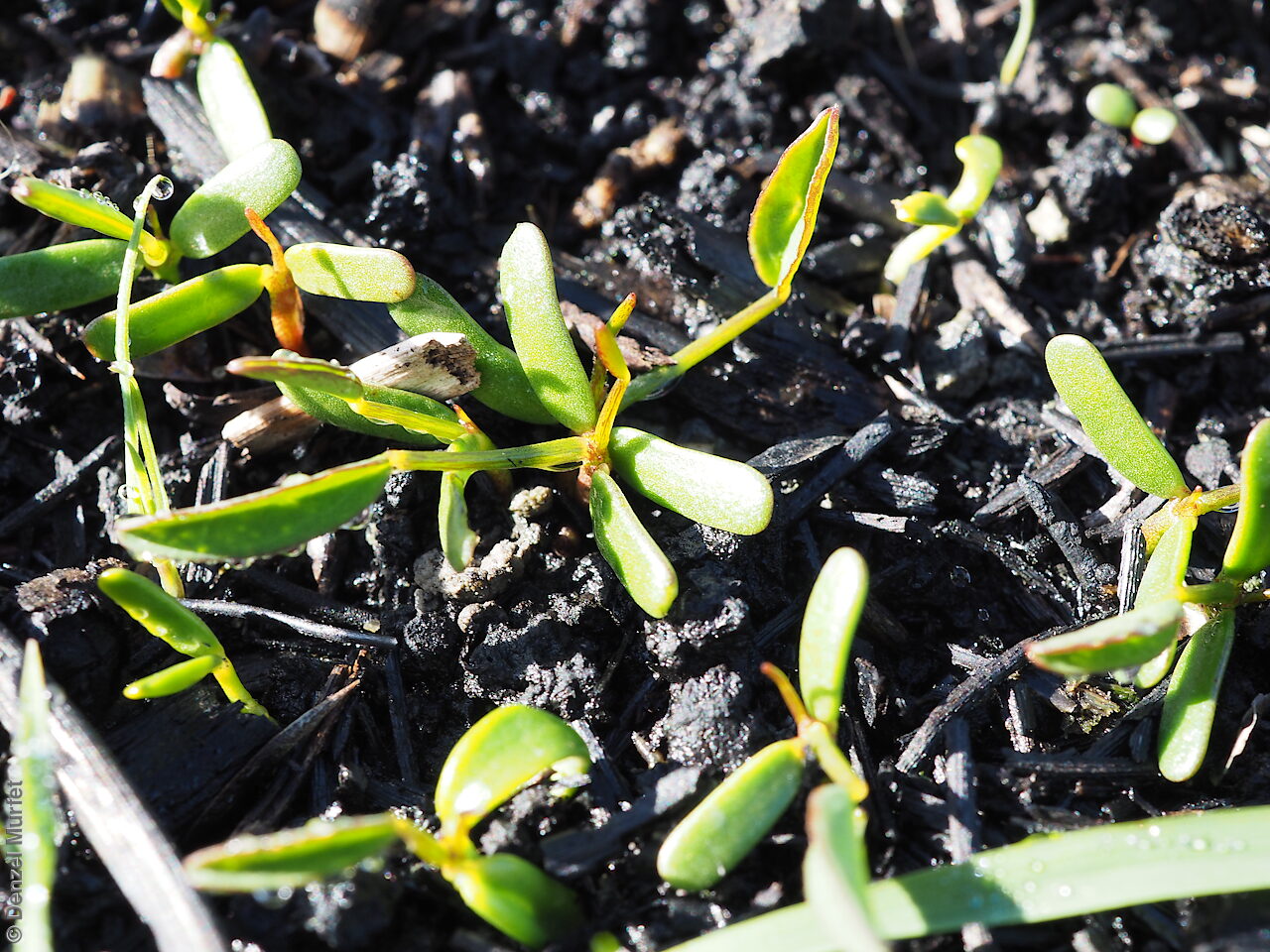

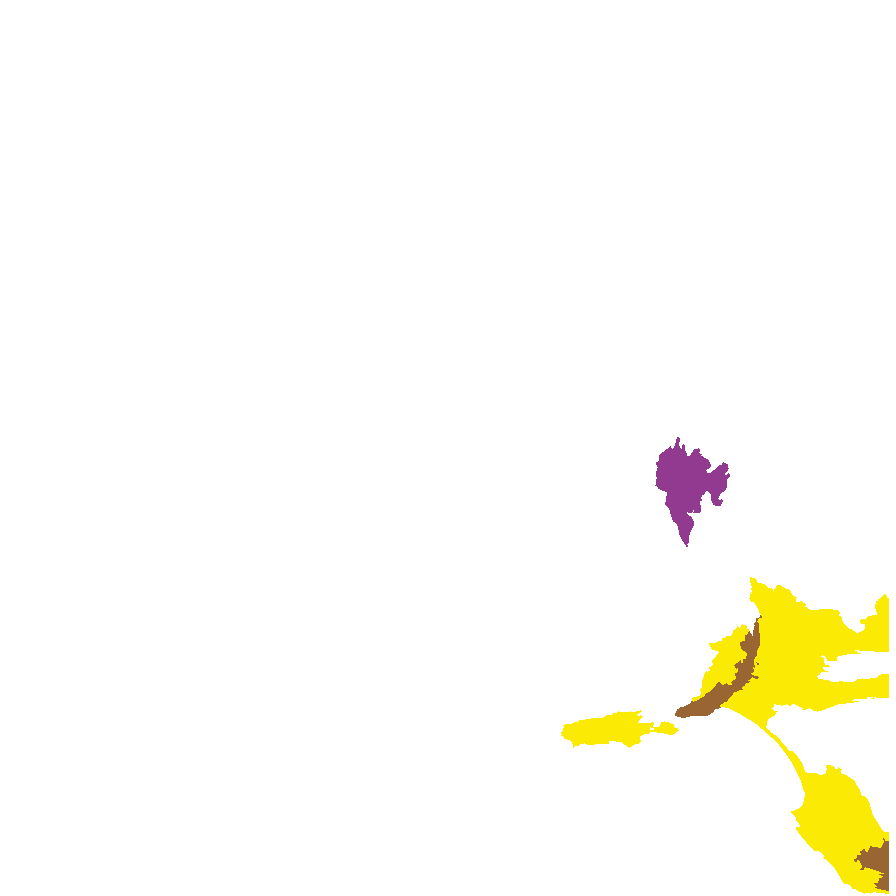
Botanical art
Prior names
Daviesia denudata
Sophora juncea
Viminaria denudata
Common names
Golden Spray
Native Broom
Etymology
Viminaria from the Latin 'vimen' meaning twiggy; referring to the long twiggy leafless branches. Juncea from the Latin 'juncus' meaning rush-like; alluding to its leafless appearance
Distribution and status
Found on Kangaroo Island, the southern Mount Lofty Ranges and the lower South-east in South Australia, growing in swampy depressions in heathland or woodland. Also found in all other states except in the Northern Territory. Native. Rare in South Australia. Very rare in Tasmania. Common in the other states.
Herbarium regions: Northern Lofty, Southern Lofty, Kangaroo Island, South Eastern, Green Adelaide
NRM regions: Adelaide and Mount Lofty Ranges, Kangaroo Island, South East
AVH map: SA distribution map (external link)
Plant description
Shrub to 5 m high with pendulous, wiry, glabrous, green and striate branches. Juvenile leaves 1–3-foliolate, leaflets oblong to linear-lanceolate, to 4 cm long, mature leaves reduced to slender petioles to 25 cm long. Flowers in racemes to 20 cm long with yellow to orange often with red blotches pea-flowers. Flowering between November and February. Fruits are black ovoid pod to 5 mm long, with one seed inside. Seeds are mottled orange-red, reniform seed to 2.5 mm long and 2 mm wide. Seed embryo type is bent.
Seed collection and propagation
Collect seeds between January and April. Collect maturing pods, those that are fat, turning black and contain a hard orange seed inside, by running your hands along the fruit-spikes. Place the pods in a tray and leave to dry for 1 to 2 weeks. Then rub the dried pods to dislodge the seeds. Use a sieve to separate any unwanted material. Store the seeds with a desiccant such as dried silica beads or dry rice, in an air tight container in a cool and dry place. From two collections, the seed viability were high, at 100%. This species has physical dormancy that needs to be overcome for the seed to germinate (e.g. nicking or softening the seed coat).
| Location | No. of seeds (weight grams) | Number of plants | Date collected | Collection number Collection location | Date stored | % Viability | Storage temperature |
|---|---|---|---|---|---|---|---|
| BGA MSB | 4,000 (27.9 g) 4,000 (27.9 g) | 30 | 25-Jan-2005 | MKJ80 Southern Lofty | 31-Mar-2006 | 100% | -18°C |
| BGA | 11,600 (57.75 g) | 30 | 24-Jan-2008 | DJD1043 Southern Lofty | 19-Sep-2008 | 100% | -18°C |
Number of plants: This is the number of plants from which the seeds were collected.
Collection location: The Herbarium of South Australia's region name.
% Viability: Percentage of filled healthy seeds determined by a cut test or x-ray.